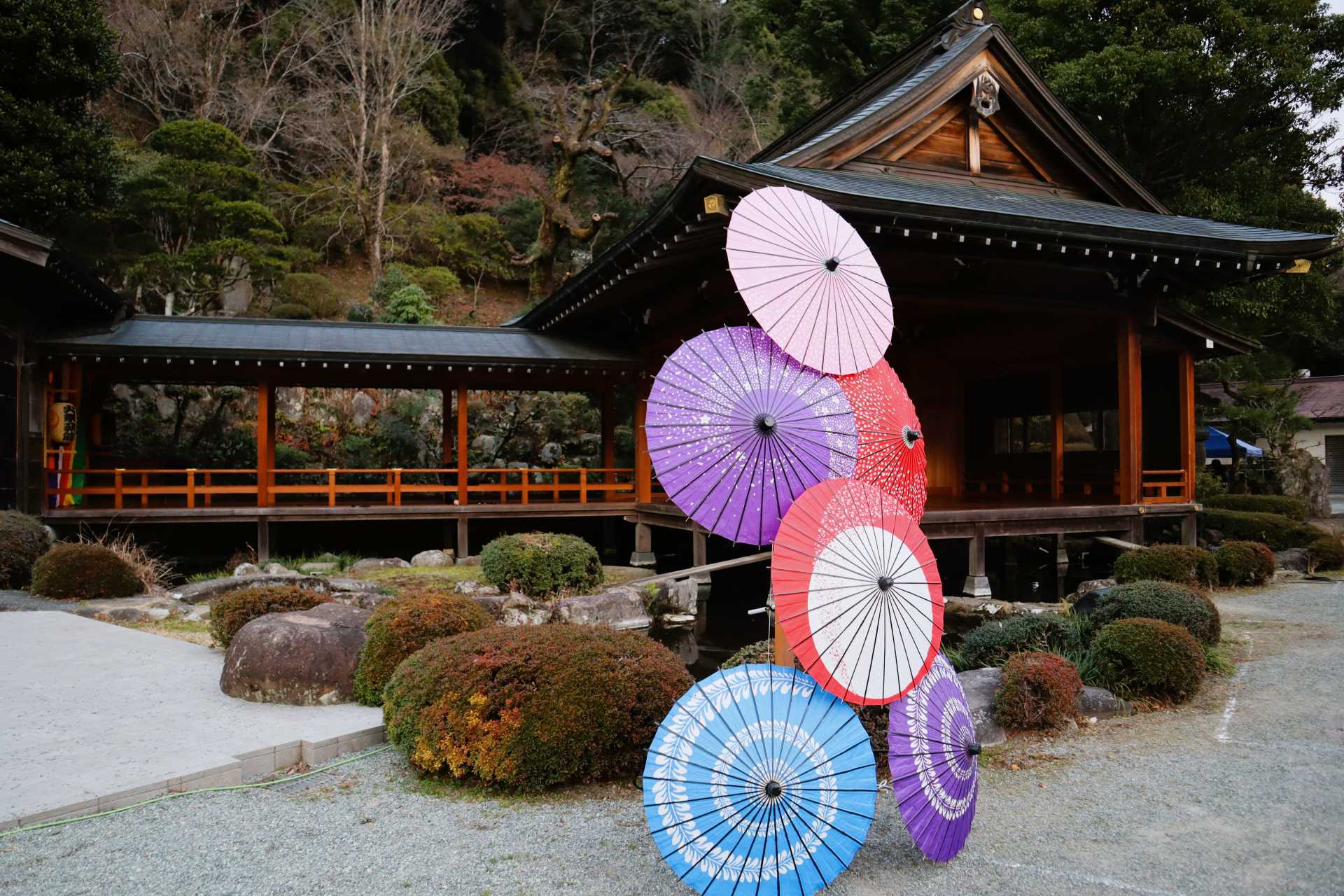The sight of Mount Oyama’s pyramid-shaped silhouette, at an altitude of 1,252 meters, is hard to miss in the Kanagawa area. The hike to the summit has been on my bucket list for quite some time, not least for its famous Oyama Afuri Shrine and the fact that it’s less than two hours away from Tokyo by train. What I didn’t know, was that this mountain has been considered sacred since the Jomon period (some 5,000 years ago) and was an extremely popular pilgrimage site during the Edo period. As it was believed that Mount Oyama could stop the rain, people came here to pray for abundant harvests or for prosperity in business.
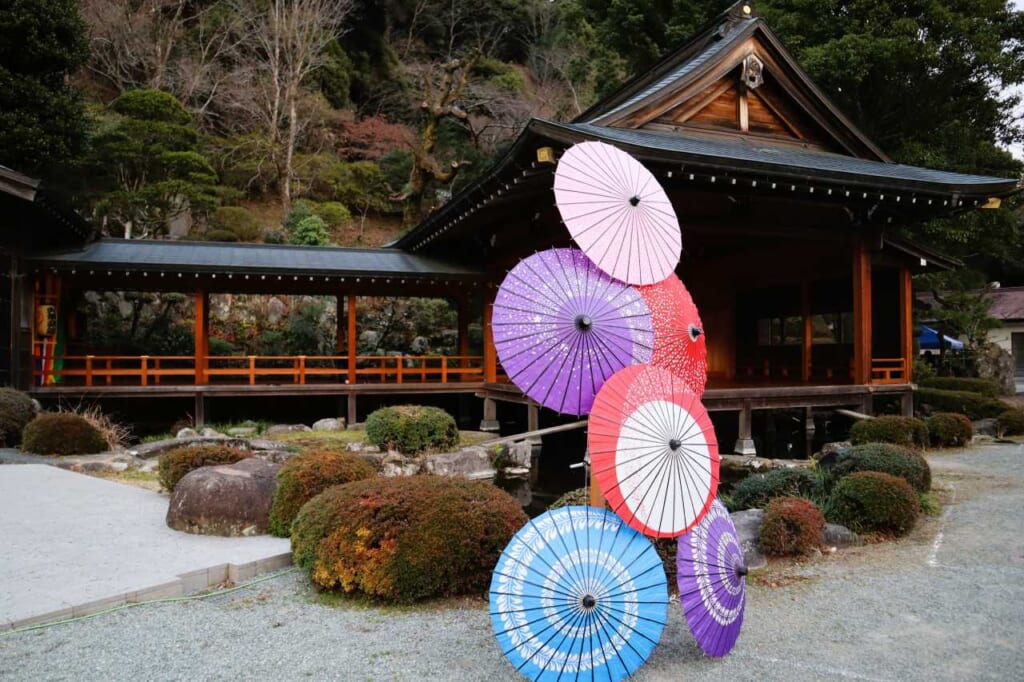
In the 18th and 19th centuries, “up to 200,000 worshippers made their way up to Mount Oyama each year” on a four-day journey from Akasaka in Tokyo along the current National Highway 246, explains Meguro-san, a gonnegi (Shinto priest) whose family has been based at Oyama Afuri Shrine for 250 years. “They represented one-fifth of the capital’s population!” Edo merchants formed religious organizations called kou (講) and pooled their resources to send a representative of their organization to Mount Oyama every summer. It’s a tradition that surprisingly still exists today, albeit on a much smaller scale. Accompanied by Meguro-san, we attempt to relive the experience of these Edo period pilgrims, step by step.
Reliving the experience of Edo-period pilgrims
Our ascent begins at Koma-sando, a stone path lined with souvenir stores. We see many Oyama koma, traditionally handmade spinning tops that serve as good-luck charms, as well as small restaurants serving local specialties such as tofu made with clear clean water from the Tanzawa mountain range. The shopping street is so charming that the 15-minute walk flies by fast – as does climbing the 362 steps to the top, encouraged by friendly signs cheering “You’re almost there!”
Two paths lead first to Oyama-dera (大山寺) Temple, then to the lower part of the shrine, Oyama Afuri Jinja Shimosha (大山阿夫利神社 下社). As night falls, we cheat a little by taking the cable car, which is also a handy option for more casual hikers, as it elevates you 700 meters in six minutes. And while it takes another two hours to reach the famous Honsha (本社) at the summit, the panoramic view is well worth the hike, as confirmed by its two stars in the Michelin Green Guide. On a clear day, you can see the island of Enoshima and even as far as Tokyo!
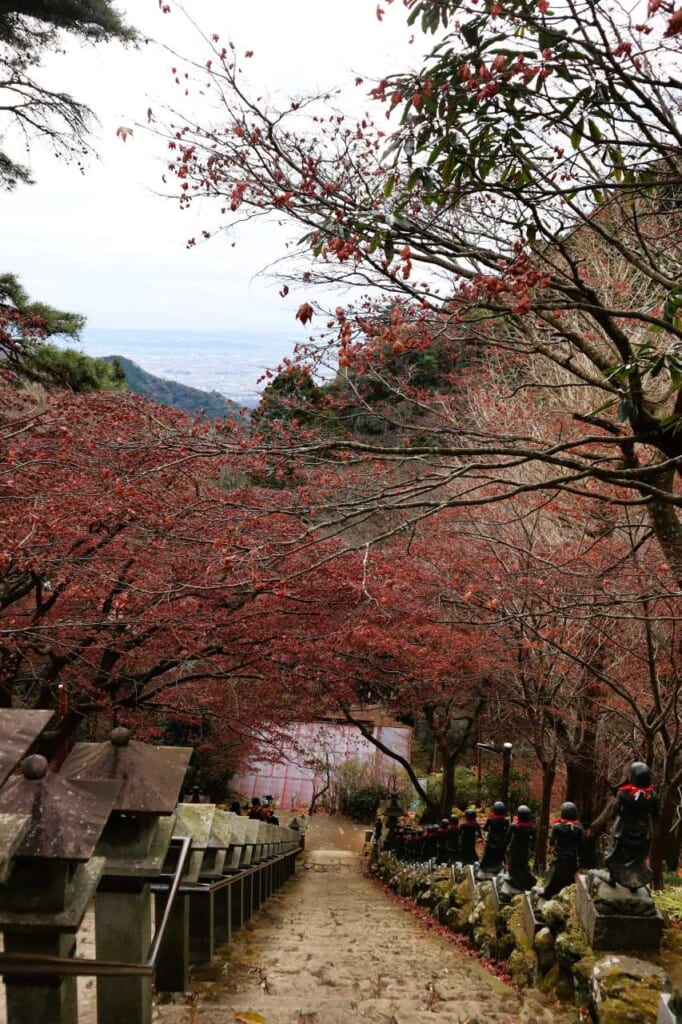
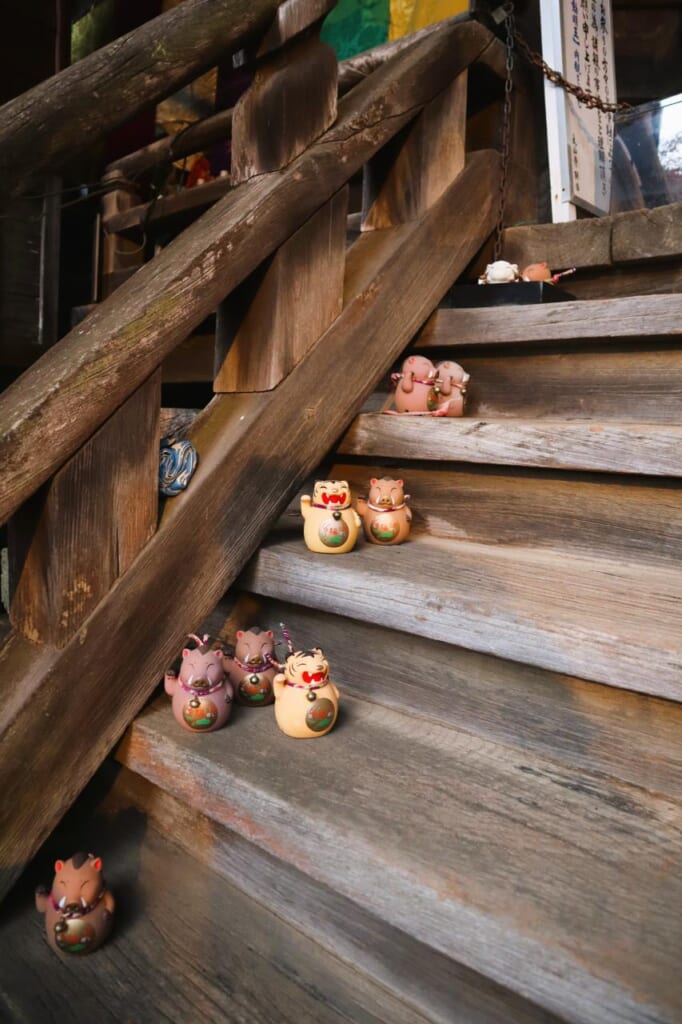
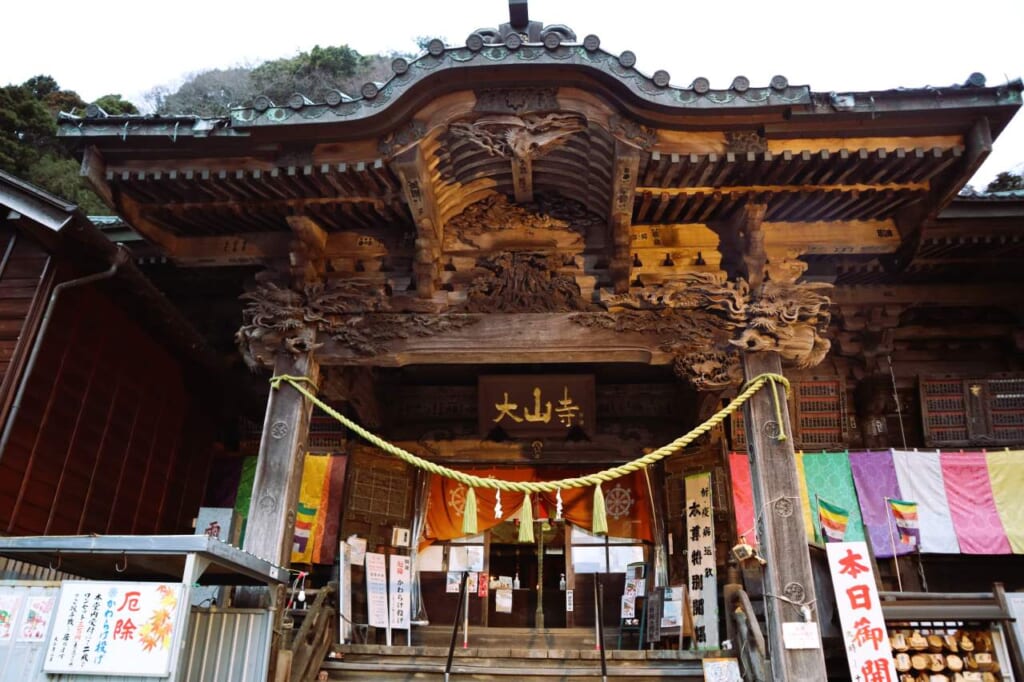
It’s here that we re-enact the tradition initiated in the Kamakura period by the samurai Minamoto no Yoritomo, who offered his sword to the shrine. This ritual led Edo-period pilgrims to donate in turn long wooden swords called osamedachi. Some were so passionate about this little ritual that they didn’t hesitate to carry 6 or 7-meter-long wooden swords all the way up to the shrine!
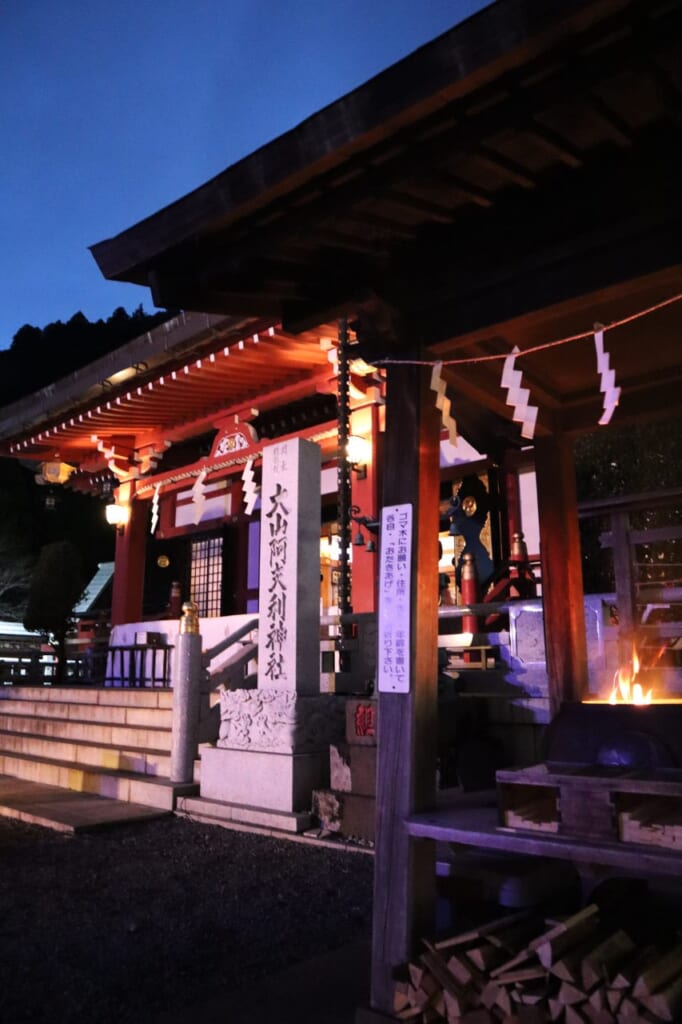
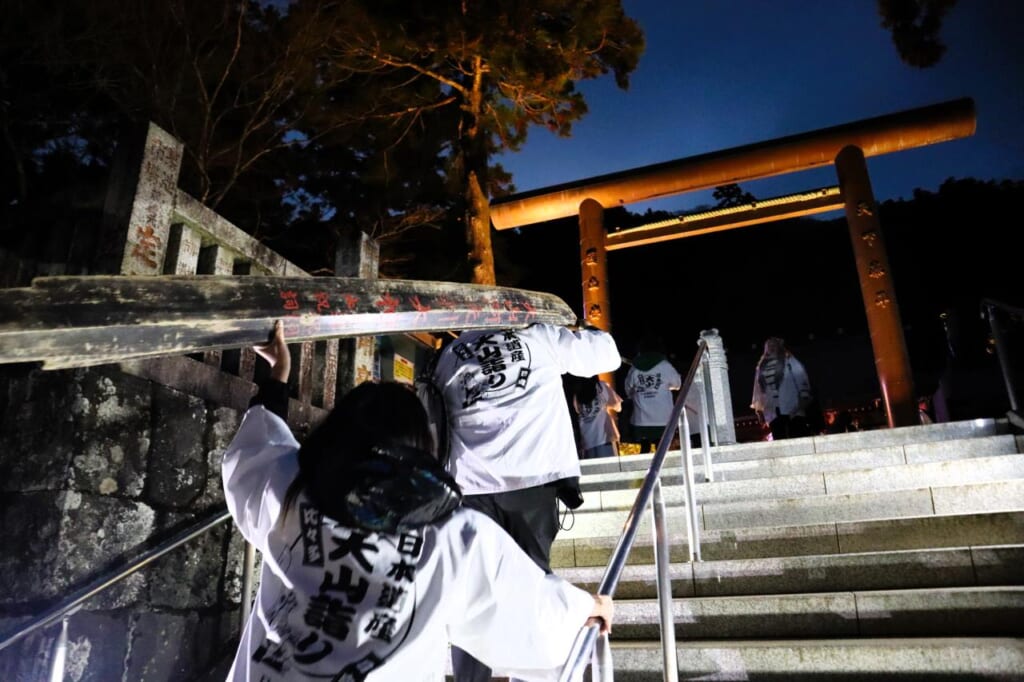
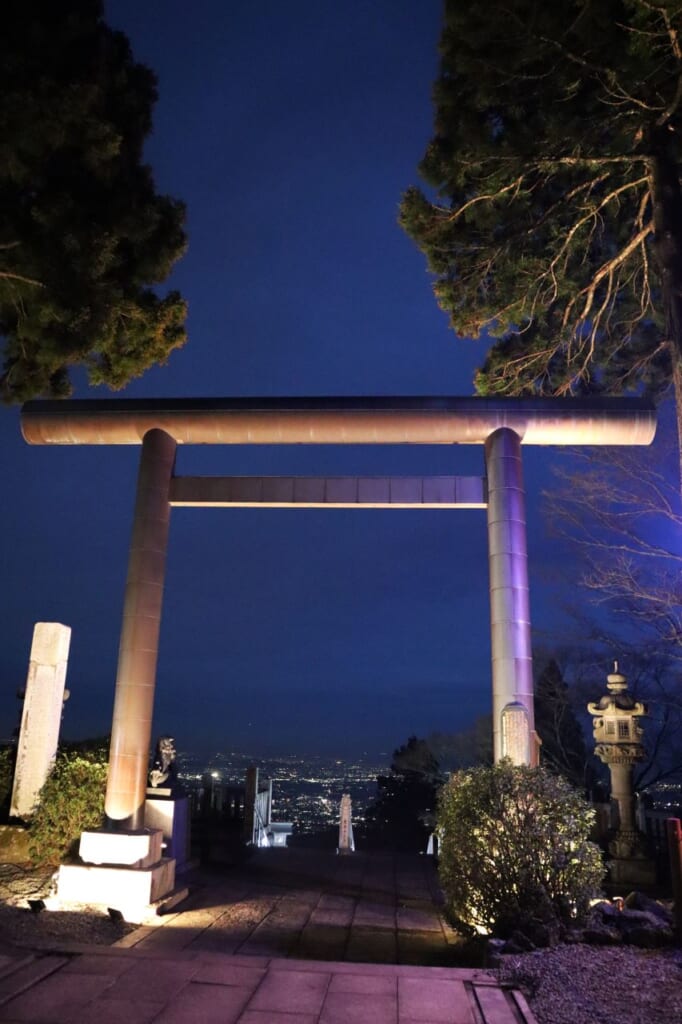
Such scenes are depicted in ukiyo-e prints from the period.
Performances steeped in tradition and spirituality
Inside the shrine, we each make a silent prayer and offer our own osamedachi before attending the sacred kagura ritual dance dedicated to Shinto deities. A young priestess performs gracefully to the rhythm of taiko drums and the gentle melody of a flute, creating a spiritual, mystical atmosphere. I am especially captivated by beautiful accessories adorning her hair and the fluidity of her full-sleeved red and white costume, adding unique elegance to her every move. It’s truly a privilege to admire this performance in a shrine whose history is said to span more than 2,200 years.
Just as fascinating to observe is the tea ceremony, another cultural tradition in which every gesture is significant. It’s presented in the afternoon in the open air, in a slightly modern and simplified configuration. Once our hostess, dressed in a magnificent kimono, arranges the space and purifies the utensils, it’s time to prepare the tea itself. She measures out the appropriate amount of matcha powder, pours the hot water, then vigorously whisks the mixture with a bamboo whisk into a delicate, intensely bright-green froth. With a slight bow of the head, we gratefully receive the fruit of this extremely precise ritual with both hands, contemplating the bowl in silent admiration. Much more than tea-tasting, the tea ceremony is an esthetic and spiritual experience to appreciate beauty in simplicity and inner peace.
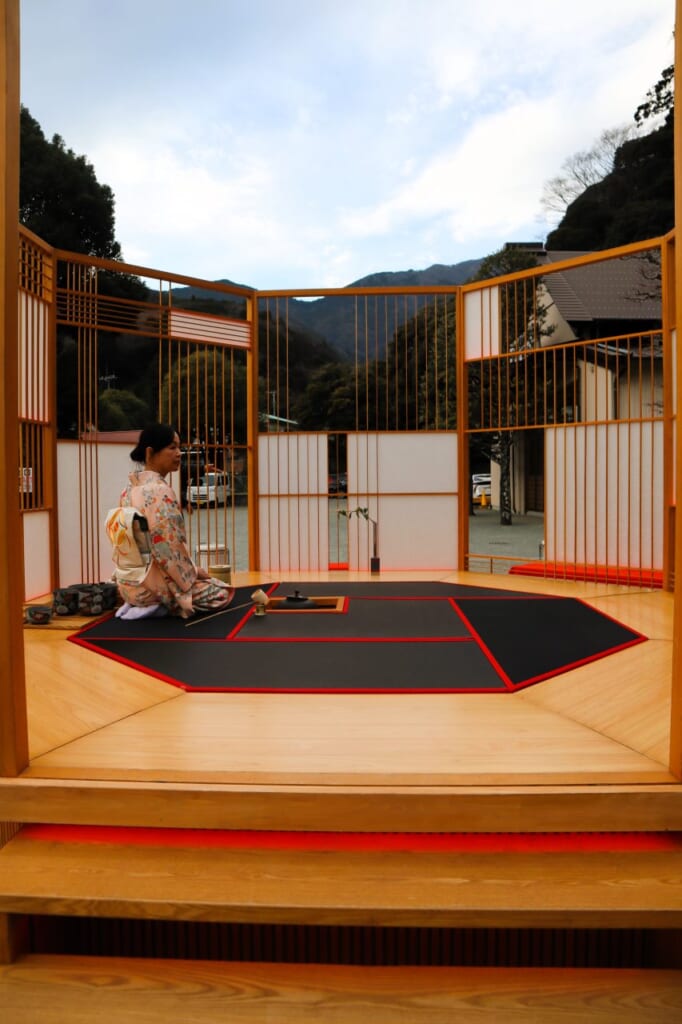
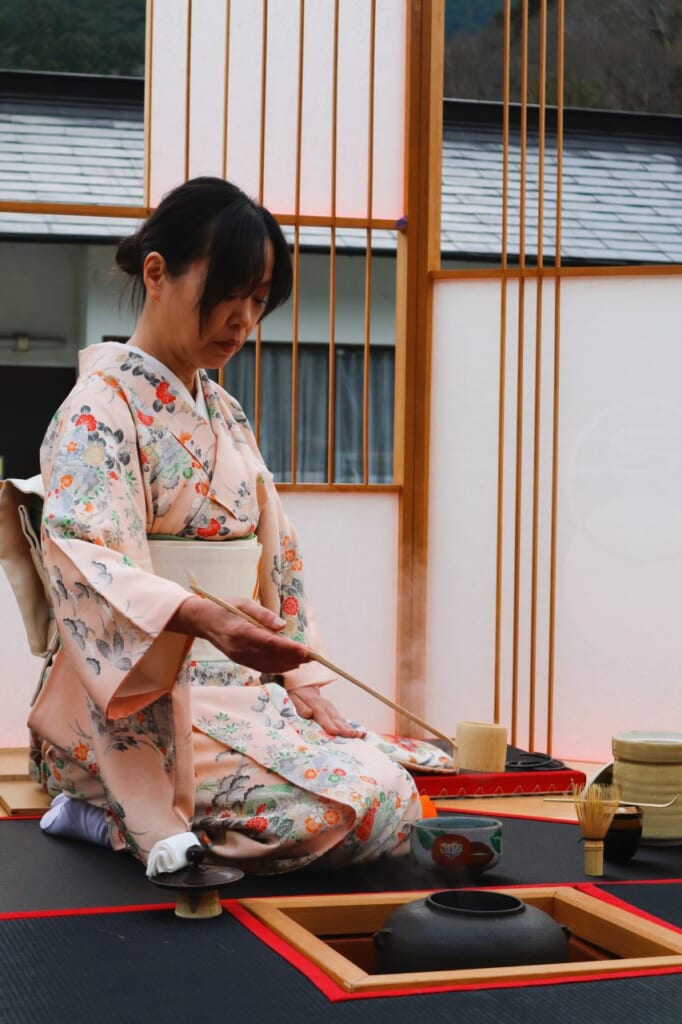
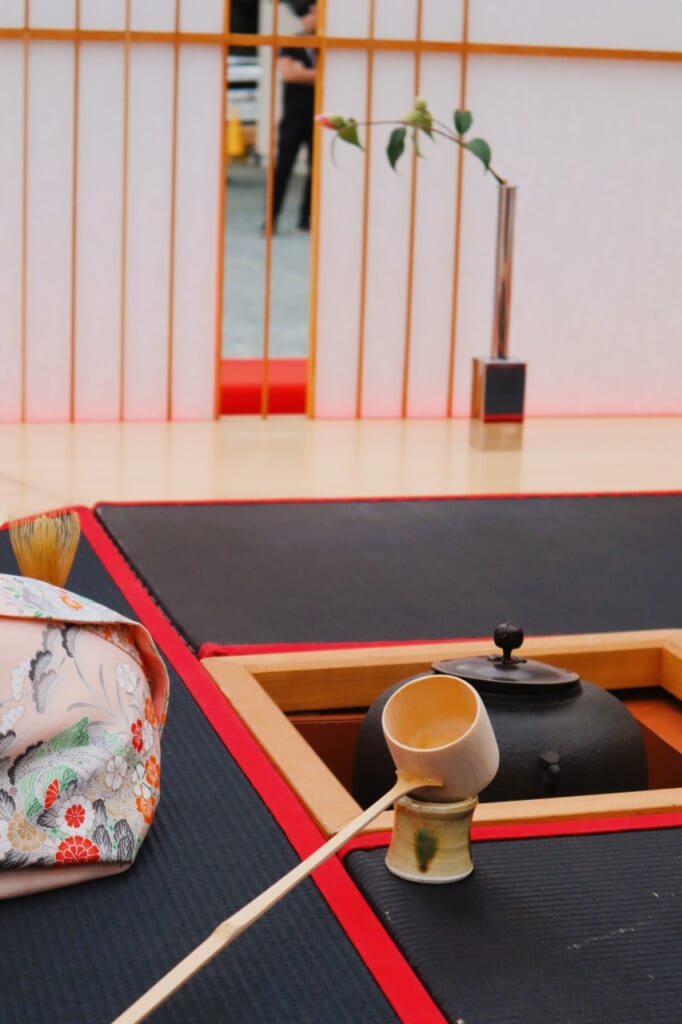
A few steps away in this extraordinary natural setting, a large wooden stage, bathed in soft sunlight, is set to host a performance featuring two kinds of traditional Japanese theater: noh and kyogen. Noh is a dramatic form of theater linked to religious tradition, that explores serious and spiritual subjects with characters such as gods, ghosts and warriors. As for kyogen, I’m pleasantly surprised to discover a comedic style of theater depicting amusing everyday situations.
Meguro-san explains the plot of both plays to us beforehand, so it’s easy to follow the story through the actors’ performances. But an even more memorable experience is going backstage after the show, where the props and sumptuous costumes are generously introduced to us. We even go out on stage to learn the delicate technique of basic noh movement: suriashi, or walking without moving the upper body or lifting the feet completely off the ground. Try it while wearing a noh mask that limits your view to two tiny eyeholes, and you will gain an immediate appreciation of this deceptively simple technique! One of the actors, who is only 6 years old, tells us that his father, uncle and even his 4-year-old brother are also noh actors!
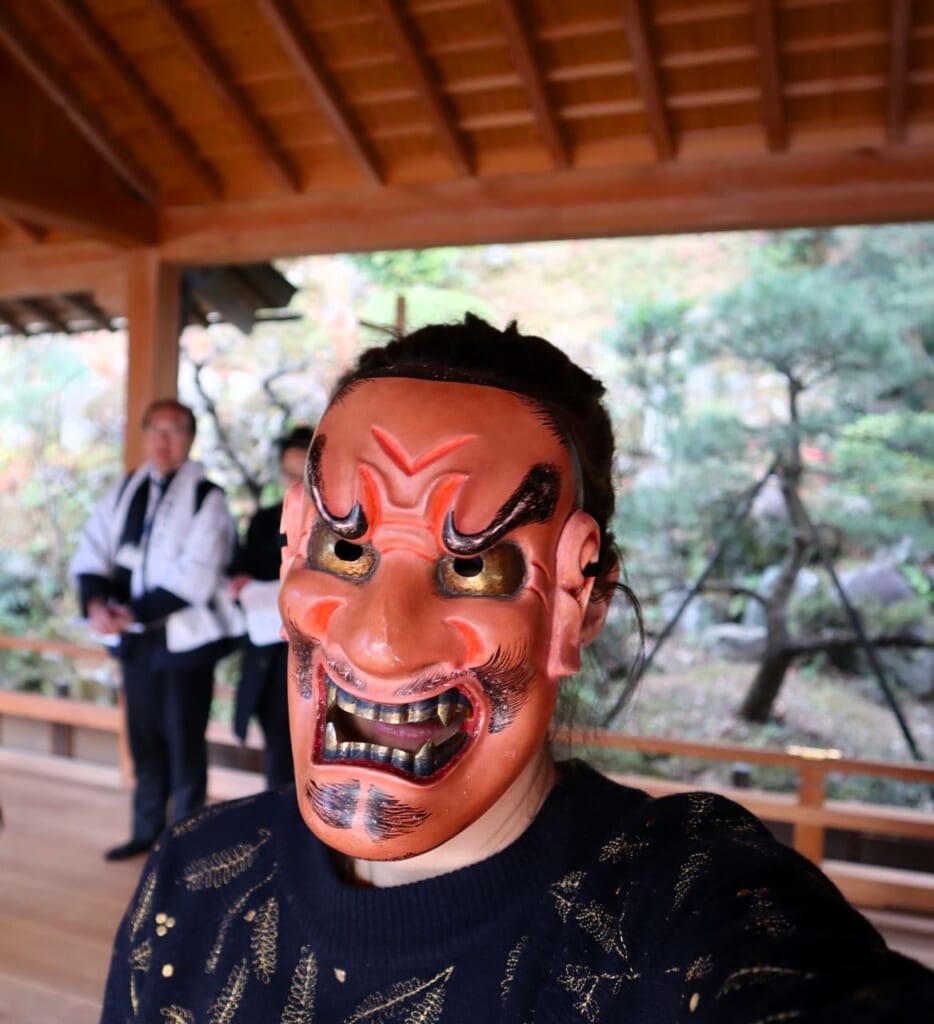
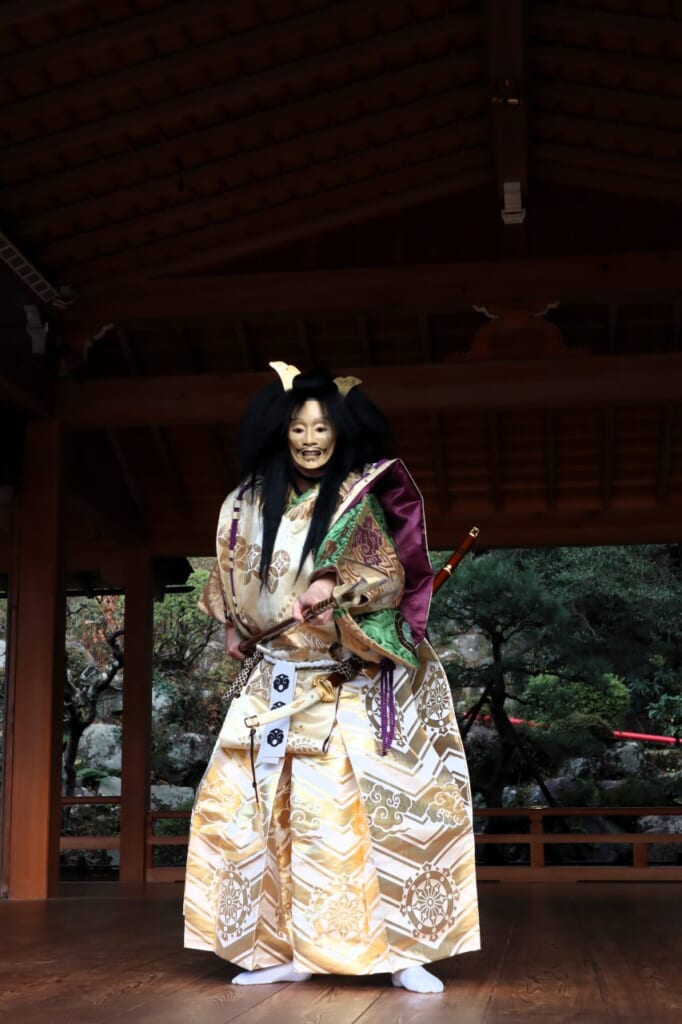
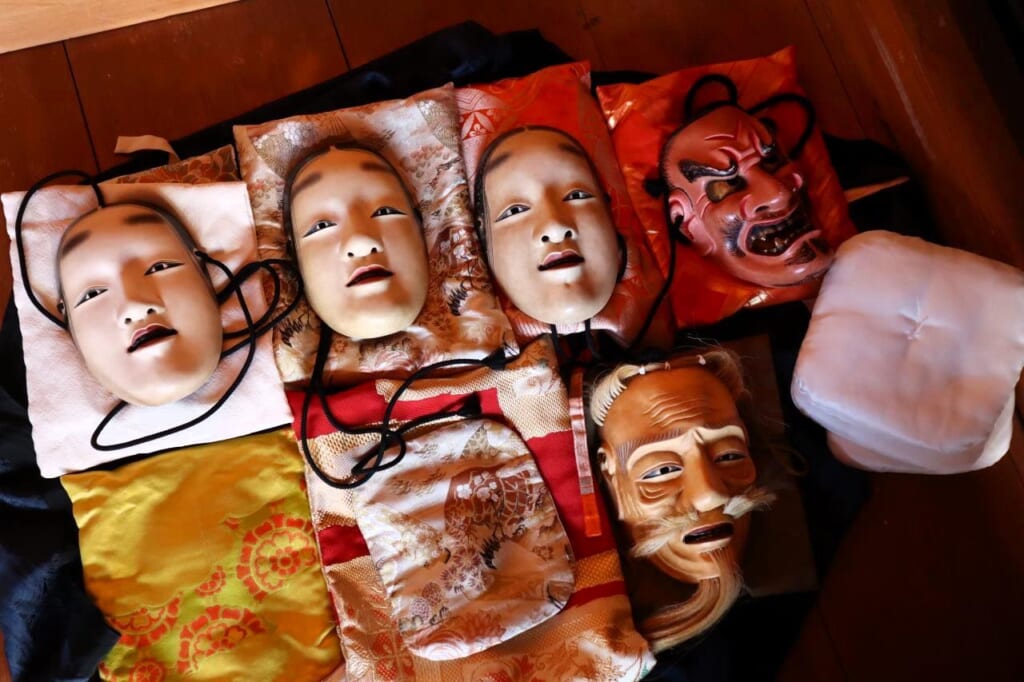
As a graceful conclusion to our evening, we walk along one of the village streets that – just for us – revives the nightlife of the Edo period: sake-tasting, a performance by three charming geishas, and traditional Japanese games, including a demonstration of skill with various Oyama koma spinning tops (which I fail miserably at). Fortunately, I make up for it at Chō-han, a game of chance where you roll two dice and bet on their sum: chō for even; han for odd. Beginner’s luck was a big help, no doubt!
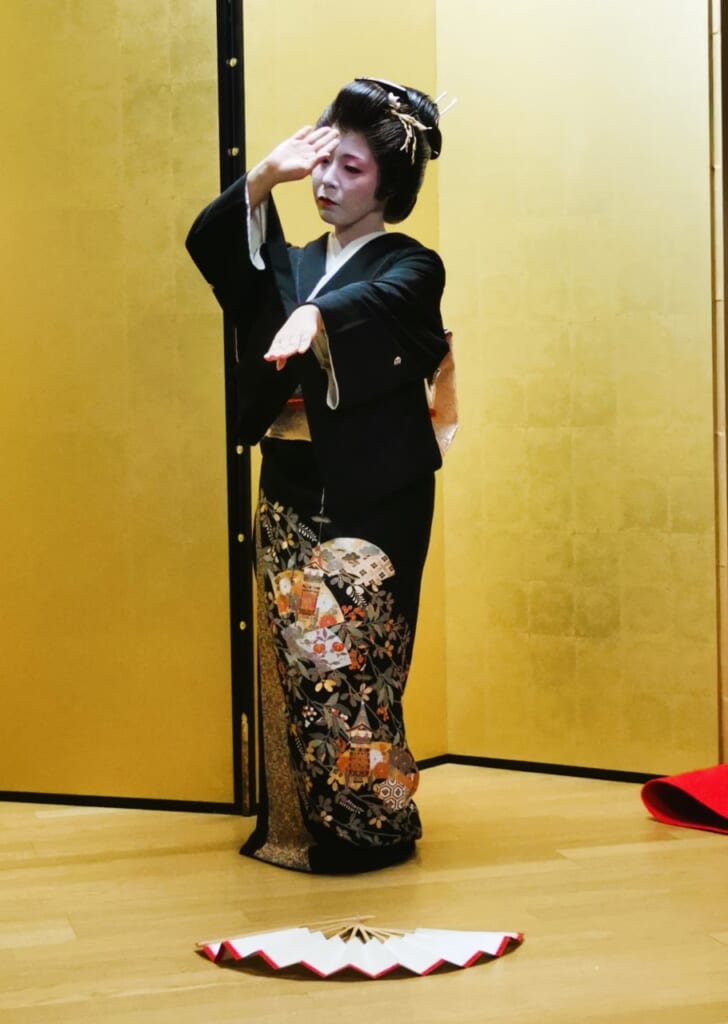
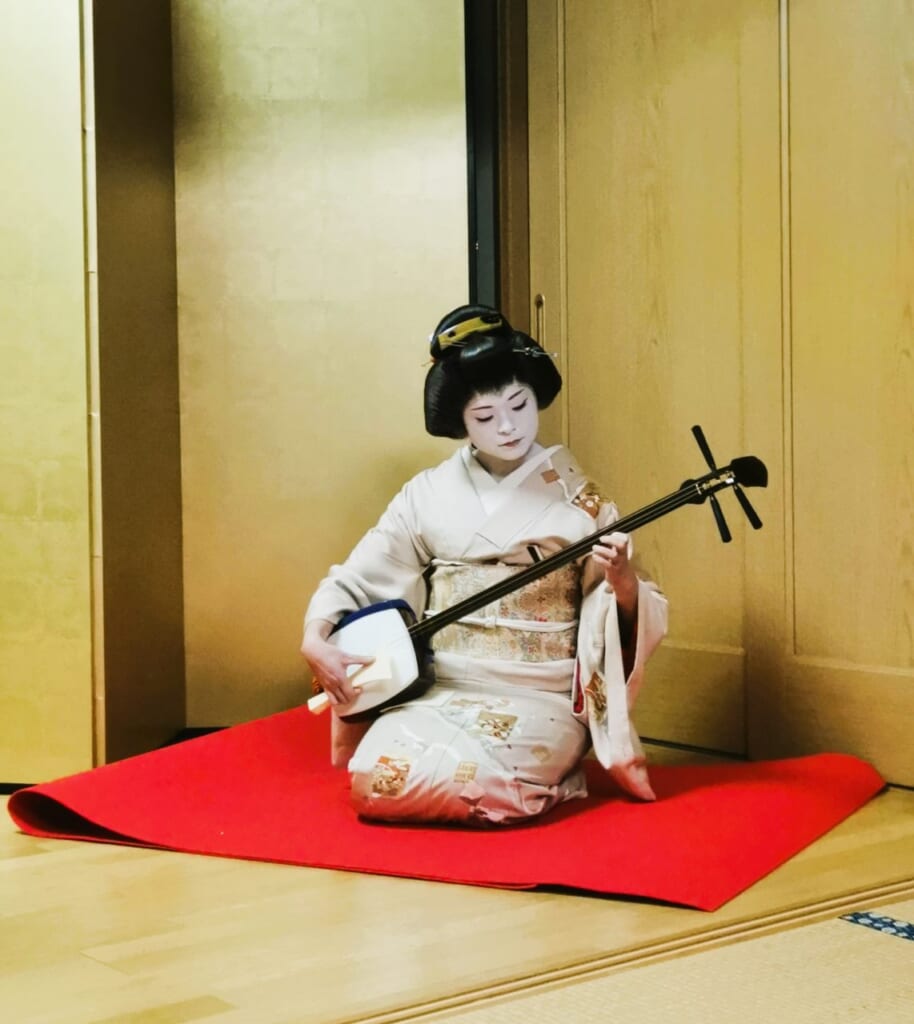
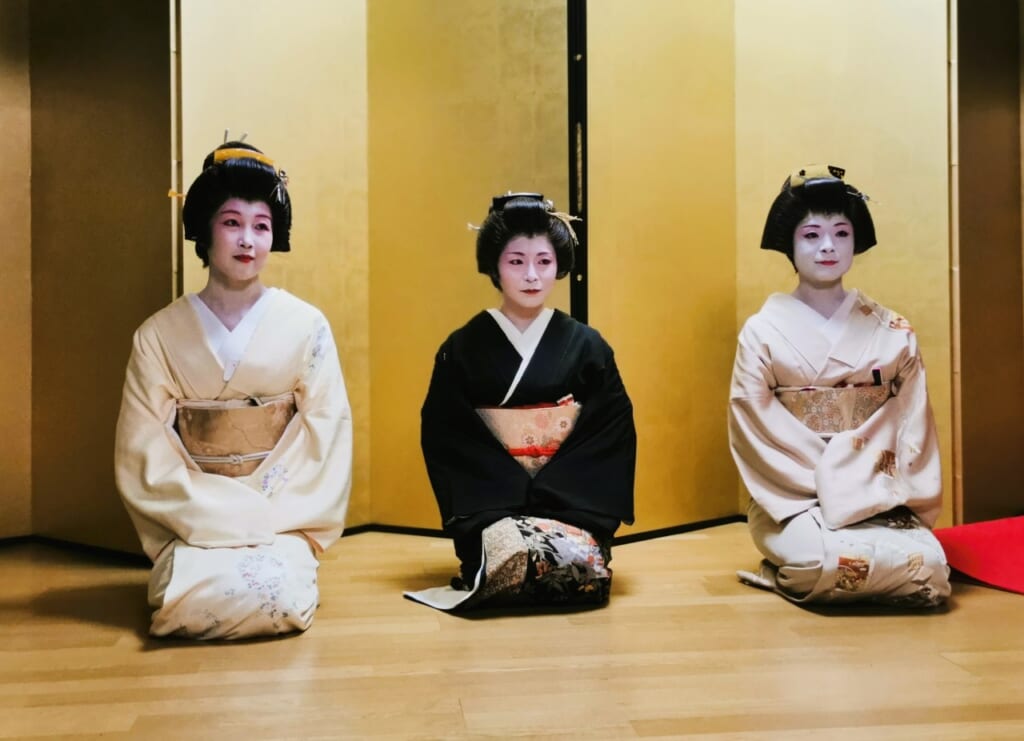
In any case, this evening filled with warm encounters, artistic demonstrations, and traditional games is a wonderful and charming immersion in Japanese history and the culture of the Edo period.
Continuing the Mount Oyama experience
A pilgrimage to Japan would not be complete without at least one night’s stay in a shukubo, or traditional temple accommodations. Many of these small inns, which historically hosted pilgrims on their way to Mount Oyama, are still in business and now welcome tourists as well. Tsutao, the one I stayed at, was fairly simple, but my hostess served me a very generous breakfast, and even showed me how make tofu from soy milk at home (hint: add a few centiliters of bittern).
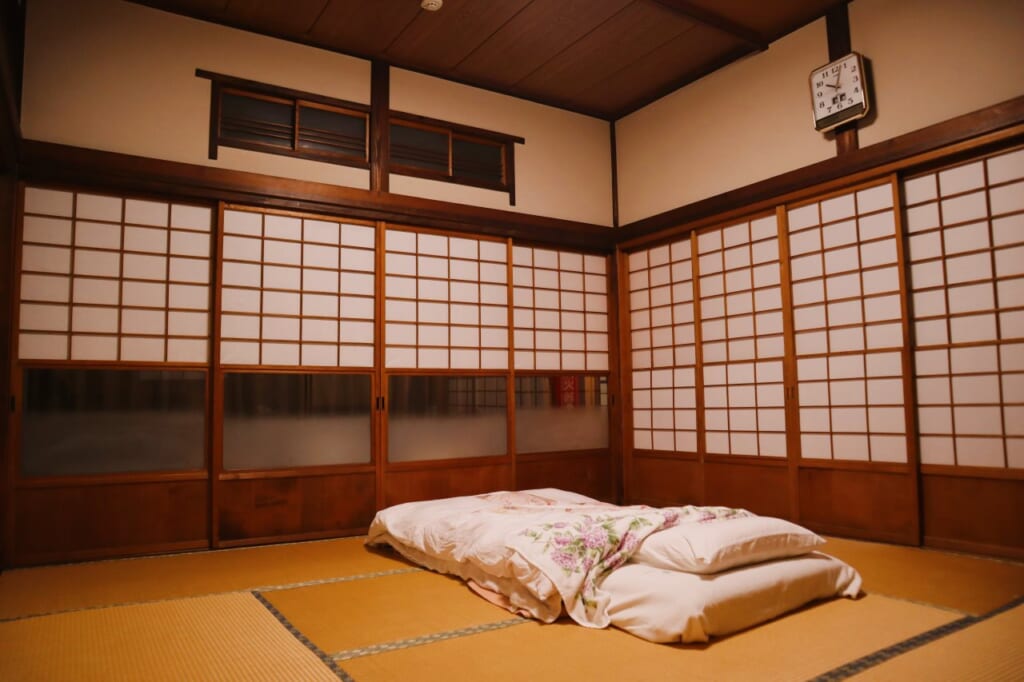
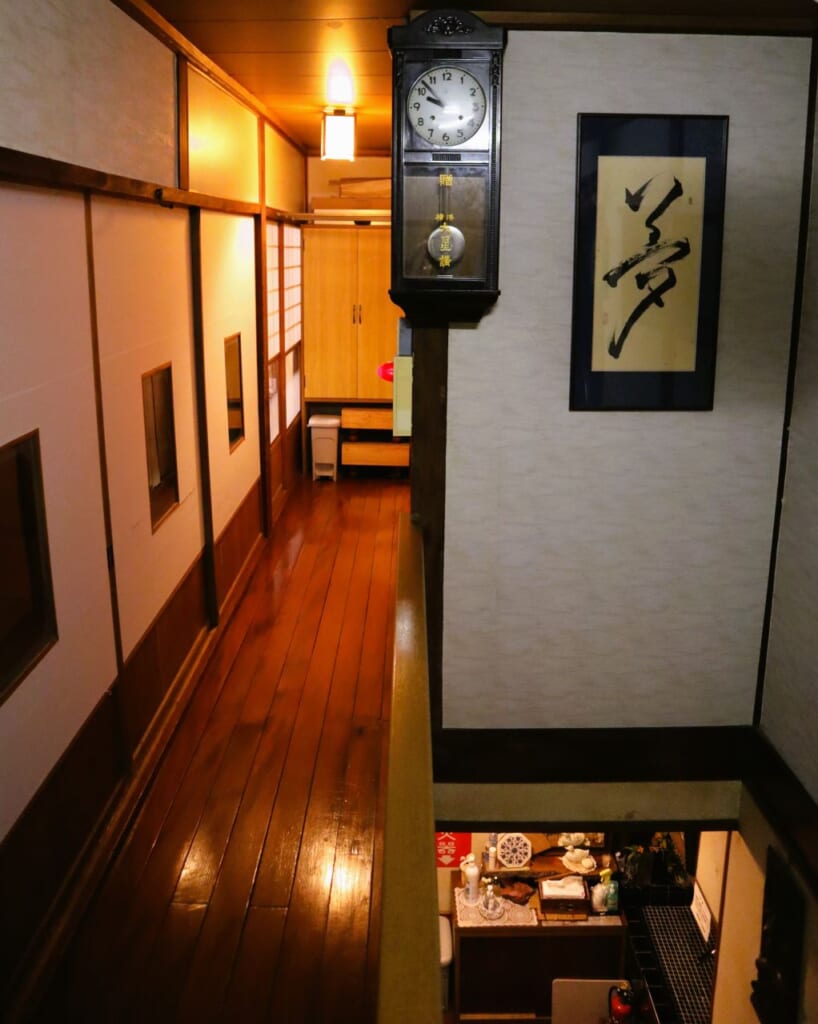
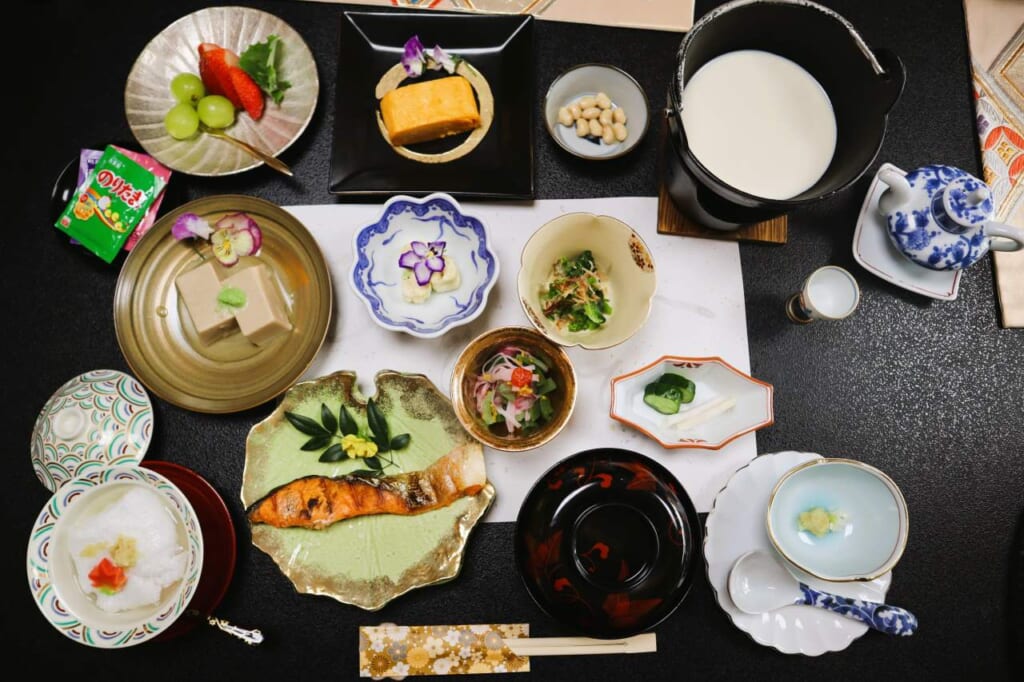
Finally, if you want to thoroughly enjoy the panoramic view from Oyama Afuri Shrine, I highly recommend visiting Saryo Sekison (茶寮 石尊) teahouse and its “sky terrace”. Although the restaurant was open in the evening that day for our special dinner, the place is very pleasant and the view is just as breathtaking by day as it is by night.
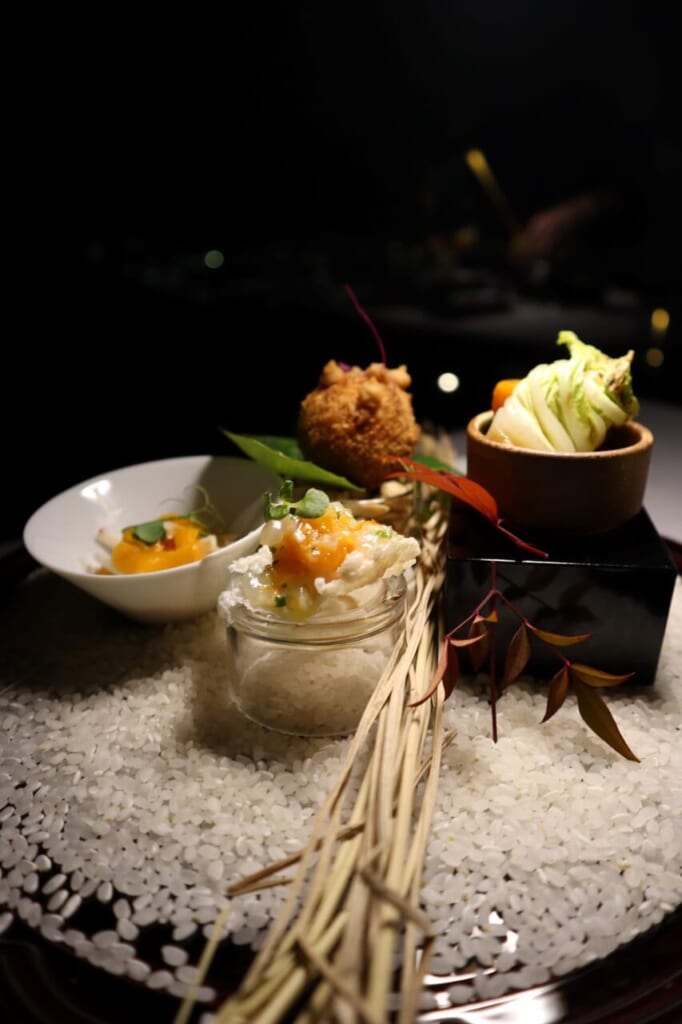
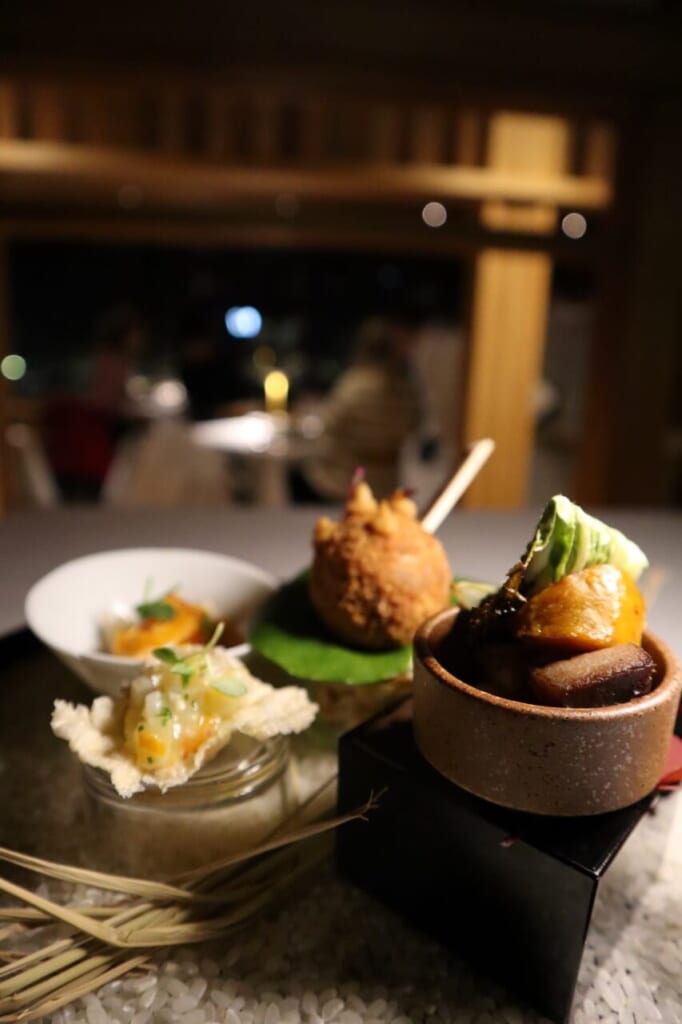
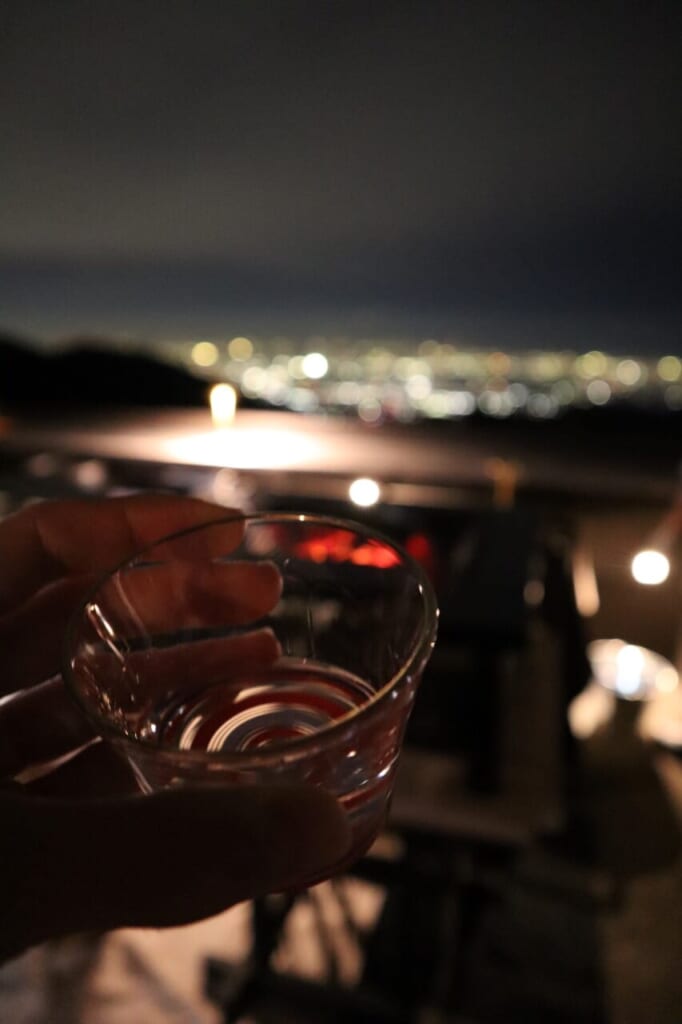
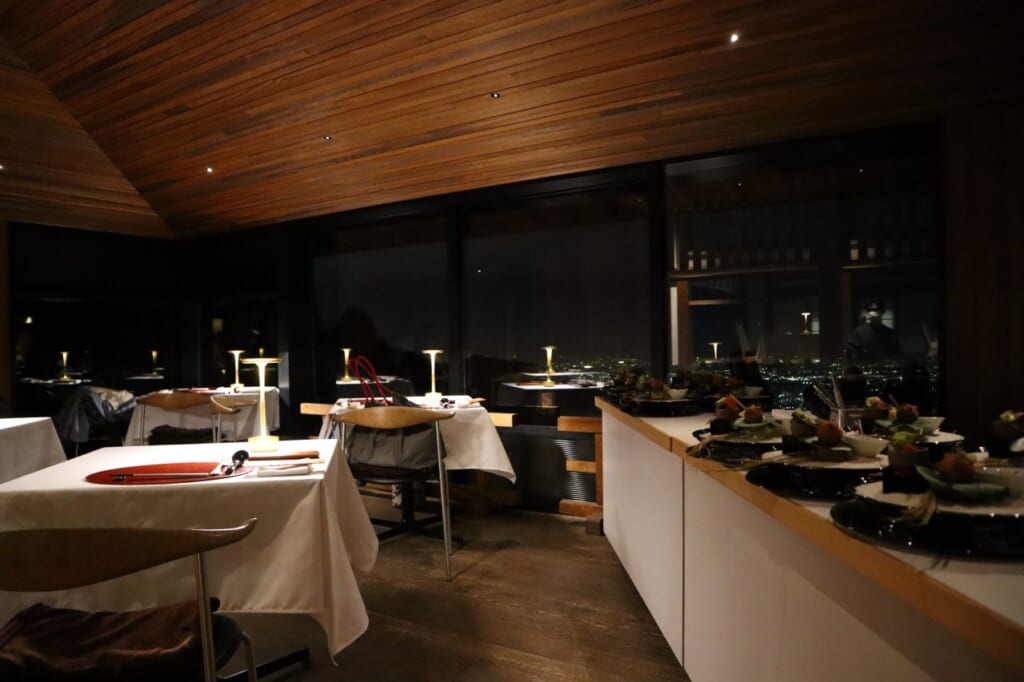
Last but not least, don’t miss Oyama-dera Temple, accessible from the middle station of the cable car, or by foot. It’s famous for spectacular autumn leaves, which are illuminated at night from mid- to late-November. Early in the morning, I attended a gomadaki ceremony: a fire ritual in which prayers are offered to the flames, to the rhythm of drums and sutras recited by monks. But this temple has much more to offer, including rare works of art (statues and engravings), a stupa that you can walk around three times for good luck, and the amusing custom of kawarake-nage. This involves tossing a small clay plate, aiming to shoot it through the center of the “circle of luck” below. Why not try it for a little extra boost of fate?
How to get to Mount Oyama
From Tokyo, take the Odakyu Line express train from Shinjuku Station (新宿駅) to Isehara Station (伊勢原駅, 1 hour). The cable car only serves 3 stations: Oyama-Cable → Oyama-dera (for the temple) → Afuri-Jinja (for the lower part of the shrine). It runs from 9am to 4:30pm on weekdays and until 5pm on weekends and public holidays, with a departure every 20 minutes.
For more information, visit the Isehara Tourist Association website.
This trip to Mount Oyama was a true journey back in time to the Edo period, offering a unique perspective on the area’s culture and traditions. One thing is certain: I will go back for a hike in autumn, if only to be greeted by spectacularly glowing red maple leaves swaying above the long stone staircase of Oyama-dera. And I hope you will too!
Article sponsored by Isehara City
Translated by Cherise.


